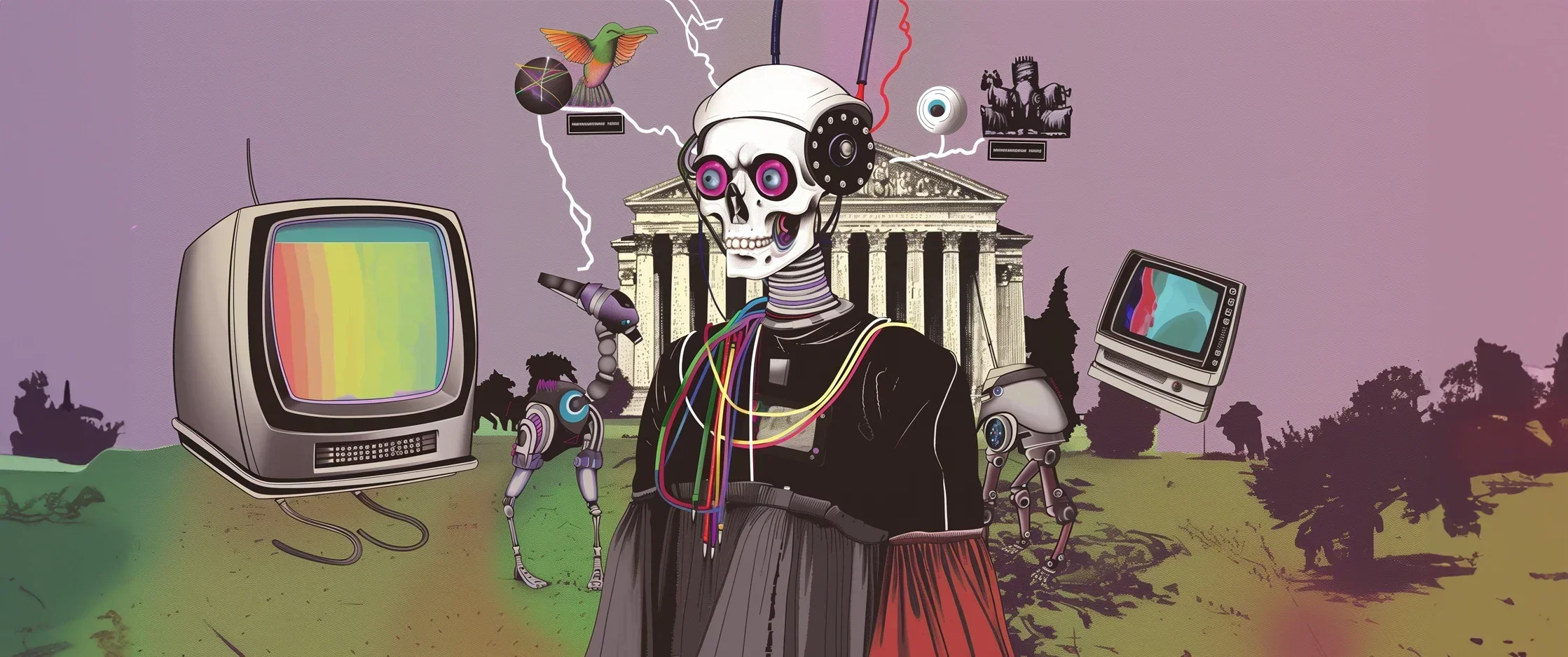Spotify has grown over the years to become one of the most popular music streaming services, with millions of users and a vast song library. Spotify’s algorithm, which generates personalized playlists and suggests music, is the primary driver of its appeal. It has changed how music lovers interact with musicians and discover new music. This algorithm improves the user experience by sensing and responding to their musical tastes and preferences intuitively. This guide explains how to make the most of the Spotify algorithm and comprehend how it functions as a vital component of the music discovery process.
Spotify Algorithm: A Guide for Artists
In 2014, Spotify made a strategic move that changed the game when it acquired The Echo Nest, a music data platform that simplifies analytics, playlist creation, and song identification. Subsequently, Spotify adopted an artificial intelligence (AI) system that made use of machine learning and natural language translation. You must, therefore, understand how this algorithm functions if you wish to increase the popularity of your music on Spotify today.
- What Is the Spotify Algorithm?
- Key Components Influencing Recommendations
- How Spotify Personalizes Music Recommendations
- Strategies for Artists to Leverage the Spotify Algorithm
- Common Questions About the Spotify Algorithm
22.00$
12.00$
What Is the Spotify Algorithm?
To put it briefly, Spotify’s algorithm is what makes their personalized music recommendations. A sophisticated artificial intelligence system called Bandits for Recommendations as Treatments (BART) is its main component. The primary goal of BART is to keep the audience interested. To achieve this, it plays and suggests songs that the user is already familiar with, in addition to introducing new songs that it believes they might enjoy. It also makes personalized playlists, mixes, daylists, and artist recommendations.
The algorithm works effectively overall. In its latest Fan Study, Spotify found that over 25% of all new artists were found through the Spotify radio algorithm, mixes, and other automated features. The overall discovery rate was close to 40% when Discover Weekly and Release Radar were included.
So, how does Spotify algorithm work? It uses three primary processes to provide recommendations to its users.
| Spotify Algorithm Component | Short description |
| NLP (Natural Language Processing) | Analyses the language, lyrics, reviews, articles, and other music-related content to understand the themes of tracks |
| Collaborative Filtering | Compares new songs to a listener’s current habits to decide what will suit their tastes |
| Content-based Filtering | Analyzes songs’ audio characteristics and their metadata to recommend similar music |
Collaborative Filtering
A major component of the Spotify recommendation algorithm is collaborative filtering. This strategy involves gathering and analyzing vast amounts of data on user preferences and behavior. It uses user trends and similarities to predict what new music users might like. When the musical tastes of two users are very similar, it is common practice to recommend songs that one user has liked but that the other has not yet heard.
Content-Based Filtering
Unlike collaborative filtering, content-based filtering only considers musical qualities and characteristics. This technique uses audio properties and song metadata to recommend new music based on the user’s current musical tastes. Release Radar, for instance, recommends new music from artists that users have indicated interest in. Spotify also uses this technique to create the well-known algorithmic playlists Discover Weekly and Daily Mix.
Natural Language Processing
Natural language processing, or NLP, is used by Spotify’s algorithm to decode and interpret data that contains text written by humans. It includes the lyrics, titles, and descriptions of songs on playlists, as well as text from blog posts, articles, and other music news. This enables Spotify to better comprehend the emotional and cultural significance of songs by analyzing the contexts in which they are mentioned and how people discuss them. It helps Spotify to make more precise music recommendations.
Spotify Algorithms are explained in greater detail in the video below. The author outlines the key elements of the algorithm and describes how it suggests music to its users.
Key Components Influencing Recommendations
Why is Spotify algorithm so bad for my tracks? Does it sound familiar to you? Well, you are not alone. Many bands, artists, and labels often wonder how to plan their releases strategically to optimize the algorithm and attract more listeners. Let’s review a few key methods by which Spotify selects the songs it suggests to users through algorithmic playlists, daily mixes, and other means.
Since Spotify uses audience engagement as its main criterion for judging tracks, artists should give it top priority. The main markers of user engagement are as follows:
- Total number of streams.
- Total stream count.
- Number of streams for each listener.
- Saves.
- The quantity of new playlists.
- The Overall count of listeners.
- Time spent listening.
- Total shares.
- Natural Language Processing, which was previously mentioned.
If you think about how to fix Spotify algorithm and get your music recommended more often, just pay more attention to increasing these metrics. Now, let’s look at the most valuable of these elements.
Shares
Spotify keeps track of the song shares. It monitors what platforms people use and the frequency of songs shared on these platforms. These metrics are available to artists via Spotify Wrapped, which provides comprehensive analytics. Then, if your song has been shared many times, the algorithm will use collaborative filtering technologies to recommend your song to listeners who have similar tastes.
Length of Listening
Spotify will recommend your songs more often if people listen to them all the way through. However, the algorithms won’t function properly if people skip them at the beginning. As a result, Spotify places a high importance on uninterrupted, ongoing listening sessions. Because of this, building a consistent base of real, engaged monthly listeners can be helpful for your profile. You can buy Spotify Monthly Listeners for this purpose. It will help you increase algorithmic performance and grow your audience if you want your song to gain more traction and listeners.
Natural Language Processing
As we mentioned earlier, the goal of natural language processing (NLP) is to find any references to your song on blogs or social media, as well as any conversations about it. After that, it assigns a descriptive adjective to it to aid in further classification. It helps the algorithm match your song with listeners who love music with a similar vibe.
How Spotify Personalizes Music Recommendations
There are more components to the Spotify recommendation algorithm than just a list of commands. Every user can enjoy music in their own unique way thanks to this state-of-the-art machine learning technology. The system’s algorithms consider several variables to enable this level of personalization.
Analyzing User Behavior and Preferences
According to Spotify, user behavior metrics are the most critical information. The site tracks users’ listening habits across all musical genres to better cater to their preferences. They keep track of the length of each listening session, the songs they choose to play or skip, the artists they follow, etc. Spotify creates a comprehensive profile of musical tastes and routines for every user. Then, the algorithm enhances its recommendation system based on this data.
Role of Contextual Factors
Apart from user behavior, Spotify considers context factors when making personalized recommendations. These include the listener’s location, the time of day, the weather, and even the gadgets they use to listen to music. Spotify can tailor its music recommendations for every situation with the help of this data. It will, for instance, suggest upbeat music on a sunny day or while working out and softer, more reflective music on a rainy day. In a similar vein, someone listening on headphones while being outside might receive different suggestions than someone listening quietly at home on a desktop computer.
Strategies for Artists to Leverage the Spotify Algorithm
Becoming well-known on Spotify might not be possible with just a great song. However, there are a few actions an artist can take to improve their algorithmic favor and receive more recommendations. By employing these strategies to circumvent the algorithm, you can boost the number of people who find your music.
Optimizing Track Metadata
Many artists call the Spotify algorithm bad because it doesn’t suggest their music to new listeners. However, the issue is not that the algorithm functions ineffectively but that the artists don’t enter enough metadata for their songs. Spotify uses the data you provide to better understand your songs and provide more detailed music recommendations to listeners who enjoy similar genres. The basic components of metadata are the artist’s name, song title, album title, genre, and release date, but there are many more. The main idea is to give as much specific information as possible. Your songs will be appropriately categorized and heard by the right people when the metadata is correct.
Engaging with Playlist Curators
The sure thing that will definitely give an algorithm artist a boost is being added to a big Spotify playlist. The editing team at Spotify creates curated playlists that feature a diverse range of styles, moods, and music genres. Getting on a carefully chosen mix can seriously boost your exposure.
How do you get there?
Since the algorithm does not create them, you must look for playlists with related bands or genres and contact the curators yourself. Then, submit your unreleased song to Spotify for Artists so that the editorial team can listen to it. If the curators choose your song and you get featured on the playlist, the algorithm will notice you.
Because the algorithm and managers take into account the expansion of your artist profile, building a substantial fan base is also essential. To increase the visibility of your artist page and profile, you can buy Spotify Followers as part of a bigger self-promotion plan.
Spotify-curated playlists can indeed help you get more attention as an artist, but they’re not the only kind of playlists that can do that. If you want to know more about how to fool the algorithm into playing your music on top Spotify algorithmic playlists, watch the video below.
Utilizing Spotify for Artists Tools
Spotify for Artists is a vital tool for any artist who wonders how to change Spotify algorithm in their favor. It makes your profile more appealing to current and potential followers by allowing you to update it regularly with new photos, a bio, and social media links.
Another advantage of this platform is the chance to gain more insight into your target audience. Spotify for Artists provides you with comprehensive information about your audience’s location, demographics, and discovery methods. You can modify your marketing strategies to better target your audience and plan releases.
You can also submit your pitch directly to Spotify’s editorial team, which will increase the possibility that your songs will be featured in highly regarded editorial playlists.
Common Questions About the Spotify Algorithm
Spotify’s algorithm may seem mysterious, but many artists and listeners have similar basic questions about how it works. Some of the most common ones are listed here, along with explanations of their real effects on your music’s visibility and listenership.
Does Repeat Listening Impact Recommendations?
Repeat listening is, in fact, one of Spotify’s best measures of algorithmic success. Repeatedly playing a song tells the system that the user genuinely likes it. This increases the likelihood that it will be added to playlists produced by algorithms like Release Radar or Discover Weekly or recommended to users with similar tastes. Artists can gradually improve discoverability by enticing listeners to repeat a song with catchy hooks or looping-friendly endings.
How Important Are Song Skips?
Skipping is the term used to describe when a listener ends a song within the first thirty seconds. It’s bad news because the algorithm is aware that the listener didn’t like your music. High skip rates, especially at the beginning of the song, decrease the likelihood that your songs will be included in personalized playlists like Release Radar or Discover Weekly. To reduce skips, create captivating openings that entice and persuade the audience to stay.
But a few skips here and there are normal. These are typical aspects of the streaming process. However, the most crucial element is the overall quantity of people who listen to your song, save it for later playback, or add it to their playlists. They are expressing their appreciation for your music in this way.
Can External Promotions Influence Algorithmic Placement?
Although Spotify doesn’t track activity outside of the app, its algorithm closely monitors user behavior within it. Therefore, external promotion — which entails drawing in real listeners through other campaigns or platforms — can have a big impact on your song’s success.
Listener actions like playing your song, saving it, adding it to playlists, or following your profile are interpreted by the algorithm as indicators of quality and relevancy. Put another way, if you get more attention from outside sources, the algorithm is more likely to begin suggesting your song to other users who have similar tastes.
Buy Spotify streams if you’re just getting started or want to create that initial spike in activity. It is a good method for generating real momentum that will raise the visibility of your track and attract the algorithm’s attention on its own.




















































